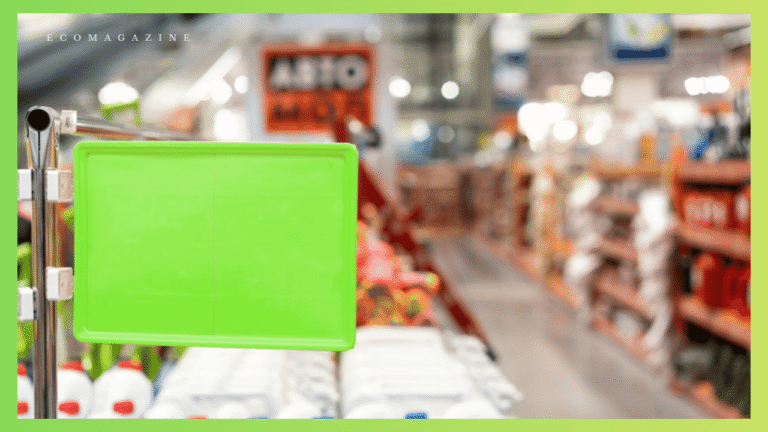Sustainability is becoming a top priority for both businesses and consumers. As companies work to reduce their environmental footprint, packaging and labelling choices are under closer scrutiny. Labels might seem like a small part of your packaging, but they can play a big role in how eco-friendly your brand is perceived to be. Switching to sustainable labels is a practical step that not only benefits the environment but also appeals to eco-conscious customers.
This guide will explore eco-friendly label materials, printing methods, and tips from Label Metrics to make your packaging more sustainable and sufficient.
Why Sustainable Labels Matter
Product packaging is one of the most visible elements of your brand. If you’re investing in recycled or minimal packaging, traditional labels made from virgin paper or plastic can undermine your efforts. Sustainable labels align with environmentally friendly values and demonstrate that you’ve considered every detail of your product’s presentation.
Today’s consumers are increasingly likely to choose brands that use sustainable packaging. According to studies, shoppers are willing to pay more for eco-conscious products, which means upgrading your labels can also make business sense.
Types of Eco-Friendly Label Materials
There are several label materials designed to reduce environmental impact while maintaining quality and performance.
- Recycled Paper Labels
Recycled labels are made from post-consumer waste, reducing the need for virgin materials. They offer the same print quality and adhesive strength as standard labels but are a more sustainable option. - FSC-Certified Labels
Labels carrying the FSC (Forest Stewardship Council) certification come from responsibly managed forests. Choosing FSC labels supports sustainable forestry practices and gives your customers confidence that your materials are ethically sourced. - Biodegradable Labels
These labels break down naturally under composting conditions, reducing long-term waste. They’re a good choice for brands selling organic, vegan, or environmentally focused products. - Plant-Based Labels
Some labels are made from renewable resources like sugarcane, hemp, or cotton. These materials reduce reliance on fossil fuels and help brands move towards fully sustainable packaging. - Wash-Off Labels
Wash-off labels are designed to be removed easily during recycling, which helps improve the recyclability of packaging. They’re particularly popular for bottles and jars.
Choosing the Right Adhesive
Many businesses overlook adhesives when switching to eco-friendly labels. Traditional adhesives can contaminate recycling streams, making it harder to process packaging materials. Eco adhesives, such as water-based or biodegradable options, are designed to minimise this problem.
Choosing the right adhesive is especially important if your products are packaged in glass or PET containers, as certain adhesives can reduce recyclability.
Printing Methods That Support Sustainability
Your choice of printing method can also influence the environmental impact of your labels.
- Digital Printing is ideal for small to medium runs and creates less waste because it doesn’t require printing plates.
- Water-Based Inks are a greener option than solvent-based inks and reduce chemical pollution.
- Soy-Based Inks are another eco-conscious choice, offering vibrant colours while being easier to recycle.
Choosing a supplier with sustainable printing practices is an effective way to reduce your carbon footprint without compromising design quality.
Reducing Label Waste
Sustainability isn’t just about choosing eco-friendly materials; it’s also about reducing waste in production and application. One way to achieve this is by optimising label size to fit packaging efficiently. Using fewer materials saves resources and can also lower costs.
Another option is linerless labels, which eliminate the backing paper used on traditional labels. This innovation significantly reduces waste and increases the number of labels per roll, making it a cost-effective and eco-conscious choice.
Communicating Your Eco Credentials
If you’ve invested in sustainable labels, it’s important to share this with your customers. Adding simple messaging like “printed on recycled paper” or an FSC logo can help demonstrate your brand’s environmental commitment. Clear communication about eco-friendly packaging can strengthen your reputation and attract customers who value sustainability.
The Business Benefits of Sustainable Labels
Going green is no longer just a trend; it’s an expectation. Retailers and online marketplaces are increasingly prioritising suppliers who use sustainable packaging. By switching to eco-friendly labels, you’re future-proofing your brand, improving your environmental impact, and appealing to a growing eco-conscious audience.
In addition, many governments are introducing packaging regulations that encourage or require businesses to reduce waste. Taking proactive steps now can save time and costs in the future.
Balancing Sustainability and Performance
Some businesses worry that eco-friendly labels may compromise on quality or durability, but advances in materials and adhesives mean there are now sustainable options for every application. From product labelling to shipping stickers, recycled and biodegradable materials perform just as well as traditional labels.
If you’re unsure where to start, work with a specialist label supplier to find the best solution for your product and packaging type. They can help you choose labels that meet environmental goals without sacrificing functionality or aesthetics.
Eco Labels for E-Commerce Businesses
If you run an e-commerce store, shipping labels and packaging stickers are used in high volumes. Switching these to recycled or biodegradable materials is one of the easiest ways to reduce your carbon footprint. Combined with eco-friendly packaging tape and recyclable boxes, your labels can help create a fully sustainable unboxing experience. The WRAP initiative offers guidance on sustainable packaging and reducing waste in e-commerce.
Small changes like this can have a big impact over time, especially for businesses sending hundreds or thousands of parcels each month.
Final Thoughts
Eco-friendly labels are a simple yet powerful way to make your packaging more sustainable. By choosing recycled, biodegradable, or plant-based materials and pairing them with responsible adhesives and printing methods, your business can demonstrate its commitment to the environment. This not only supports your sustainability goals but also appeals to customers who care about their impact on the planet.
Sustainability in packaging is no longer optional. Making the switch to eco-friendly labels today is an investment in your brand’s reputation, the environment, and your bottom line.


